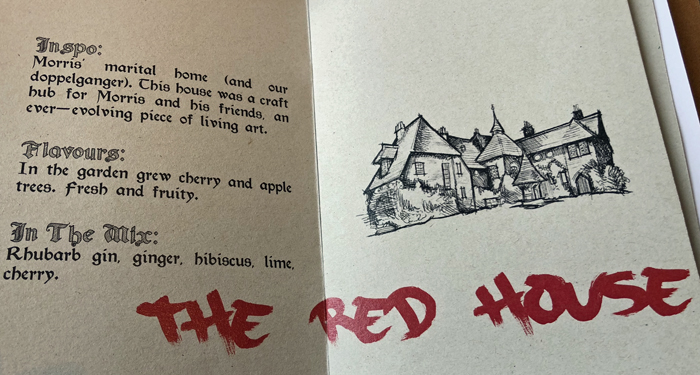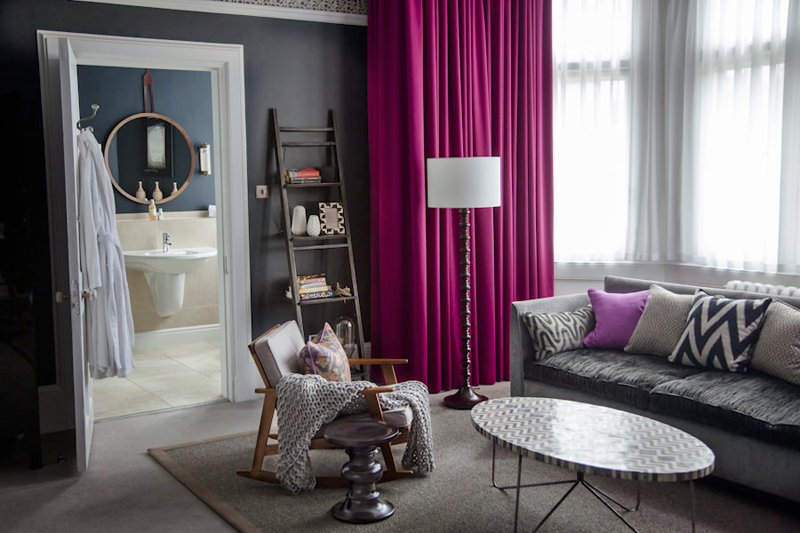An “area of special architectural or historic interest, the character or appearance of which it is desirable to preserve or enhance“. Since 1968 Hampton-In-Arden has been defined as one such Conservation Area. The church of St Mary and St Bartholomew dates from the 12th century with additions in 13th, 14th and 15th centuries. Its reputed to hold a tomb containing the heart of a Knight’s Templar who died on a crusade with Richard the Lionheart. The church was restored in the 19th century.

In 1086 the village appeared in the Doomsday Survey as Hantone but was also known as Ardene. Across the centuries the land of Hampton-In-Arden passed between the crown and many notables of royal court significance, particularly in Tudor times. George Fentham (17th Century) was perhaps the most famous non-royal benefactor to the village, the successful businessman was a true philanthropist leaving a trust to support developments and relieve hardship from the poorest in the community. Mr Fentham’s legacy lives on with an eponymous club, green and hall.

Sir Robert, Prime Minister (left), his son Sir Frederick Peel (right)
During late 18th and early 19th century, 1st Baronet Robert Peel was one of the original Lancastrian cotton mill owners during the industrial revolution. He made a vast fortune from the textile industry, this afforded his eldest son, 2nd Baronet Robert Peel the best of education at Harrow and Oxford, he would go on to twice become Prime Minister and founder of the modern police force. He was the first ever man to come from a business background to become Prime Minister. Sir Frederick Peel would also be educated through the family fortune and enter politics and inherit Hampton-In-Arden from his Prime Minister father who had acquired it as investment land. Sir Frederick proved quite a visionary for Hampton-in-Arden, building and developing shops, housing and lodges. In 1855 he built Hampton Manor.

Fjona and James Hill
Relaunched in 2009 by James and Fjona Hill having been lovingly restored, converted and developed into a beautiful luxury restaurant with rooms, with significant sections further redecorated in 2015. Set in 45 acres, boasting 15 luxury appointed rooms and suites which seamlessly blend the richness of its history with the contemporary demands of the modern customer – a ‘home from home’ with state of the art twists – all this, yet respecting centuries of heritage that delves far beyond the garlanding of rooms with the names of the great and the good who have graced the estate over the centuries.

The visit started on the driveway! Providing by chance a stunning visual first impression as we arrived through the gates and into the main entrance way, with the manor house straight ahead and to our left a Mclaren and Rolls Royce event discreetly hosted. Predominantly out of eye and earshot but just enough on view to admire. Stepping through the entrance door, the meet and greet was exemplary. Ably assisted at the reception desk that sat just inside the house, tucked away to our right. As we turned more staff were waiting to help us to our room and tell the first of many ‘soul of the building stories’ in the wide and welcoming main reception. Indeed, throughout staff exhibited knowledge which was shared carefully and cleverly to optimize the pleasure of the guest.

Having been built at the height of the rewards to Britain of the industrial era, and given his family heritage, it is easy to see that Sir Frederick Peel celebrated those developments by having the likes of Industria proudly engraved on the staircase. There are also three examples of the imposing carved figure of a lion holding a shuttle from a loom found in a cotton mill. The figure represents Sir Frederick’s grandfather, 1st Baronet Robert Peel, as ‘protector of industry,’ in this case his lucrative textile factories during the industrial revolution.

Contrary to this strong industrial imagery, Sir Frederick Peel appears to also have been an advocate to a certain extent of Romanticism, a movement which looked back fondly to a memory of the past through literature, poetry and arts and crafts. The antithesis of the industrial revolution, few were less vocal on this subject than a champion of the movement, William Morris. Some might argue an early socialist, Morris had clear ideals about the quality of design of textiles in a way that industrialised production methods could not match, ironically this made his work very labour intensive and so hard to produce in a cost effective manner. Such challenges saw Morris’ craft fall from the mainstream. His work however is celebrated throughout Hampton Manor. It may be that Sir Frederick looked back on the challenges of industrialisation – pauper child labour, terrible working conditions, excessive hours – challenges which dogged both his father and grandfather later in life and later still in politics.

William Morris (1834-1896)
The works of William Morris are a thing of beauty and Hampton Manor continues Sir Frederick Peel’s interest by paying tribute to Morris, not only in influence of theme, style and décor but more creative and modern ways such as the beautiful afternoon tea. The introductory ‘Red House’ cocktail was wonderfully conceived, constructed and presented.

Indeed this proved our immediate appointment after arrival – Like industria versus Romanticism afternoon tea embodied the innovative versus the traditional.
The service started simultaneously for all guests with no staggered bookings. The event began with an informative presentation of the concept from the head waiter, alongside a chef demonstrating dry ice. The multi-staged process started in my case with the William Morris inspired drink with an English sparkling wine from Nyetimber described as an alternative option.

A succession of courses followed including reimagined versions of Peel’s dinner savouries in place of the obsolete finger sandwiches. Lalani rare loose leaf tea was presented in jars, alongside the more traditional scones with clotted cream. A further course, which instead of traditional pastries, found tasters of Peel’s desserts.
Overall the package was a huge hit and remains understandably popular with guests and local visitors.
A tour given by Gianrico (deputy GM) took in the Parlour – the room which hosts the afternoon tea, Peel’s restaurant dining room, tasting toom, a private courtyard, library, the walled garden plus a look at ‘The Cottage’.

Upon entering Peel’s, the mixture of stained glass windows, oak paneling, William Morris wallpapers (the latter found in half the bedrooms and suites) make a bold statement. A kind of mid-Victorian mixture with many beautiful contemporary touches. Indeed, you may be forgiven for imagining the sights, smells and sounds of a Tudor feast at William Self’s hand-planed long oak table, that above all else takes centre stage in the restaurant. The concept of gathering, socializing, sharing together, like friends away from home in a relaxed atmosphere, works very well indeed.

The kitchen table or tasting room, appears more a 19th century gentleman’s study, perhaps unashamedly only vaguely converted but undeniably fit for purpose as the juxtaposed collection of state of the art cuisine is delivered from Rob Palmer’s kitchen to the study table. The modern thinking, organic, biodynamic, English championing, wine list that allows wine lovers to travel in any direction on the list from the traditional to – you guessed it – the innovative. Yet further evidence of the theme encompassing our visit.

The walled garden has proven a rapidly developing success over the previous 12 months, delivering more and more consistent quality produce. As owner James Hill pointed out, the process of being connected to the seasons simply by seeing the vegetables growing in the walled garden is good for the souls of the chefs working in the kitchen of Michelin starred Peel’s restaurant. The garden provides more evidence of the field to fork mentality that is gastronomically sweeping the nation. In addition, Bee hives have been put in place to harvest home produced honey during the forthcoming year.

Just beyond the walled garden resides Manor Cottage which sleeps 4-6 (adults only), the separate property is marketed as a home away from home hideaway for those that wish the convenience of a holiday hire cottage but with all the facilities of a hotel, a Michelin starred restaurant, and ‘pamper rooms’ at the end of the drive.
In terms of new approaches, owner James Hill pointed out that head count had been allocated to customer relationship management for particular types of custom. Hampton Manor has appreciated both its undeniable quality in the product offering but crucially how this sits alongside its geographical opportunity: Situated close enough to Birmingham city centre, the NEC and the airport, the result is business potential from providing the right kind of relationship focus on high value clients. As one example, Peel’s does not officially open for lunch but for certain customers a club-like service may be offered to encourage such patronage.
This also concluded our tour with the charming Gianrico, later that day we took a drive around the local villages before heading back to Resort World at the NEC, a 15 minute drive, to catch a movie. A staff member had explained that we could alternatively pop into Solihull, also a 15 minutes drive, if a movie was our activity of choice for the afternoon. This actually allowed a wedding event to take place back at Hampton Manor so in all the property was very busy.

Robert Dudley was the name of our first feature room – An Earl of Leicester who bought Hampton Manor estate in 1572. The aforementioned George Fentham room provided our second night stay with amazing views out of the large period sash windows to gardens situated at the back of the manor. Across the property the thought, effort and attention to detail provides a perfect feel, a far cry from any corporate homogeneity, the individually themed rooms are completely on point for the luxury demands of the modern market. Good sizes, high ceilings, and sumptuous fabrics. A large comfortable bed is supplemented by modern comforts of technology via TV, iPod dock and high performance Wifi along side the creature comforts of organic tea and cookies, or a pampering roll top bath or walk-in shower.
Over second morning breakfast we were joined by owner James Hill whose passion and vision, shared by his wife Fjona, have driven Hampton Manor continuously forward in the delivery of the details that lead to perfection. Indeed, they remain open minded about opportunities, keeping a watching industry brief for any ideas on the investments and achievements of the likes of Mark Birchall at Moor Hall or by listening to proven market leading consultants about how best to achieve their goals. Overall, a happy making stay in a beautiful property with charming staff and food to match. A great success story in such a short space of time, no doubt the property will continue to thrive under the astute stewardship of the Hill’s, of whom – were he looking down – Sir Frederick Peel and his ancestors would be feeling rightly proud!
Hampton Manor
To Book: 01675 446 080, book@hamptonmanor.com
Shadowbrook Lane, Hampton-In-Arden, B92 0EN
Map: Hampton Manor Map



